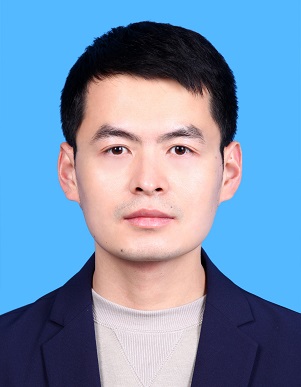
Wei Sun, Ph.D, Associate Professor
-
Member of the Youth Innovation Promotion Association of CAS
Chinese Academy of Sciences Key Laboratory of Nucleic Acid Biology, IBP
Research Interests: Structure Biology on CRISPR-Cas System
Email: sunwei@ibp.ac.cn
Tel: 010-64884212
Address: 15 Datun Road, Chaoyang District, Beijing, 100101, China
Chinese personal homepage
- Biography
2003.09 - 2007.07 Shandong University, B.Sc.
2007.09 - 2013.07 University of Chinese Academy of Sciences, Ph.D
2010.12 - 2011.12 University of Washington, Predoctoral Researcher
2013.09 - 2017.11 Institute of Biophysics, CAS, Postdoc
2017.12 - 2019.12 Institute of Biophysics, CAS, Assistant Professor
2020.01- Institute of Biophysics, CAS, Associate Professor
- Awards
- Membership in Academies & Societies
- Research Interests
CRISPR-Cas system is an adaptive immune system which is widely distributed in prokaryotes, which helps to prevent the invasion of foreign nucleic acids like phages. Meanwhile, phages have also evolved anti-CRISPR proteins to protect their genomes from being cleaved by Cas proteins. We are interested in the mechanism how CRISPR-Cas systems work and their inhibition by anti-CRISPR proteins, aiming to provide structural insights into the arms races between host and viruses using structural biology methods combined with biochemical approaches.
- Grants
2021 - 2014 National Natural Science Foundation of China, General Program
2016 - 2018 National Natural Science Foundation of China, Youth Scientist Program
2014 - 2017 China Postdoctoral Science Foundation funded project
- Selected Publications
1. Huang X, Sun W, Cheng Z, Chen M, Li X, Wang J, Sheng G*, Gong W*, and Wang Y*. Structural basis for two metal-ion catalysis of DNA cleavage by Cas12i2. Nature Communications. 2020, 11(1): 5241.
2. Mathony J, Harteveld Z, Schmelas C, Upmeier Zu Belzen J, Aschenbrenner S, Sun W, Hoffmann M D, Stengl C, Scheck A, Georgeon S, Rosset S, Wang Y, Grimm D, Eils R, Correia B E*, and Niopek D*. Computational design of anti-CRISPR proteins with improved inhibition potency. Nature Chemical Biology. 2020, 16(7): 725-730.
3. Sun W#, Yang J#, Cheng Z#, Amrani N, Liu C, Wang K, Ibraheim R, Edraki A, Huang X, Wang M, Wang J, Liu L, Sheng G, Yang Y, Lou J, Sontheimer E J*, and Wang Y*. Structures of Neisseria meningitidis Cas9 Complexes in Catalytically Poised and Anti-CRISPR-Inhibited States. Molecular Cell. 2019, 76(6): 938-952.
4. Thavalingam A, Cheng Z, Garcia B, Huang X, Shah M, Sun W, Wang M, Harrington L, Hwang S, Hidalgo-Reyes Y, Sontheimer E J, Doudna J, Davidson A R, Moraes T F, Wang Y*, and Maxwell K L*. Inhibition of CRISPR-Cas9 ribonucleoprotein complex assembly by anti-CRISPR AcrIIC2. Nature Communications. 2019, 10(1): 2806.
5. Sun W, Kuang X L, Liu Y P, Tian L F, Yan X X*, and Xu W*. Crystal structure of the N-terminal domain of human CDC73 and its implications for the hyperparathyroidism-jaw tumor (HPT-JT) syndrome. Scientific Reports. 2017, 7(1): 15638.
6. Sun W#, Zhu Y J#, Wang Z#, Zhong Q, Gao F, Lou J, Gong W*, and Xu W*. Crystal structure of the yeast TSC1 core domain and implications for tuberous sclerosis pathological mutations. Nature Communications. 2013, 4: 2135.
7. Sun W#, Gao F#, Fan H#, Shan X, Sun R, Liu L*, and Gong W*. The structures of Arabidopsis Deg5 and Deg8 reveal new insights into HtrA proteases. Acta Crystallographica Section D, Biological Crystallography. 2013, 69: 830-837.
(From Wei Sun, December 28, 2021)

